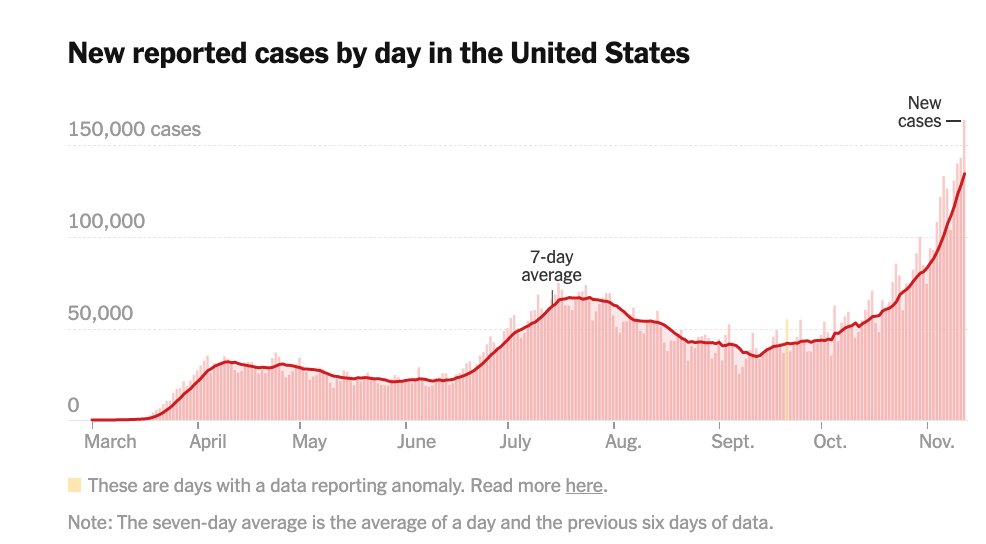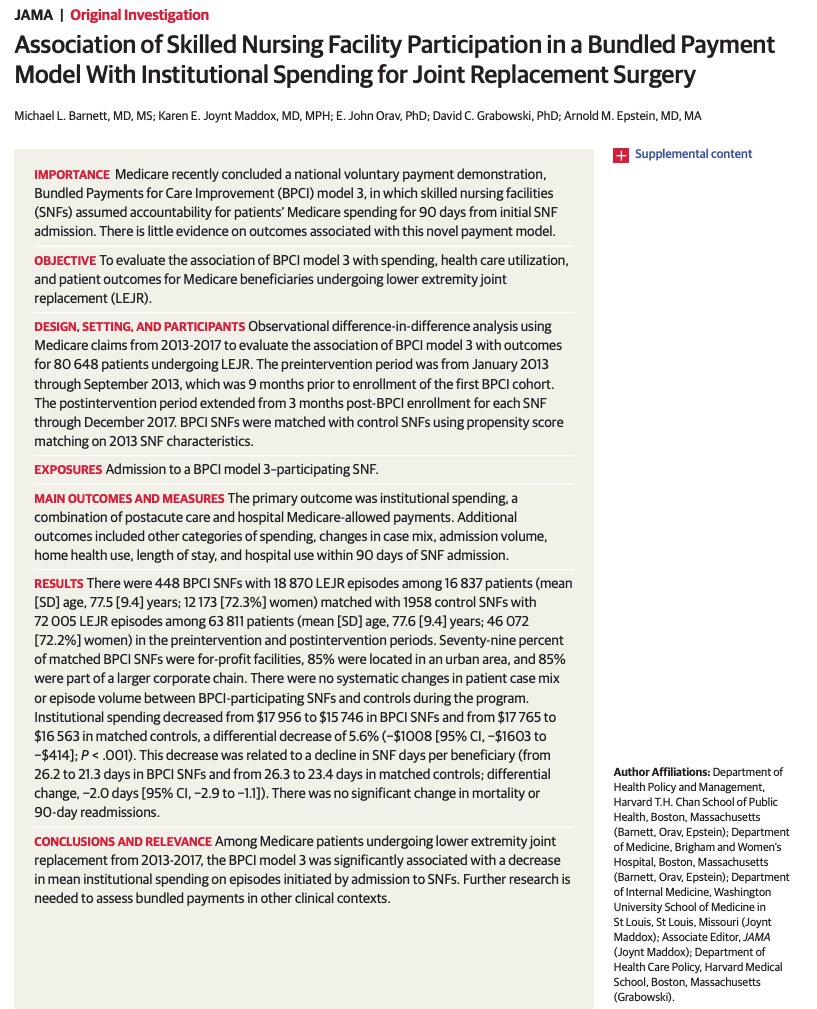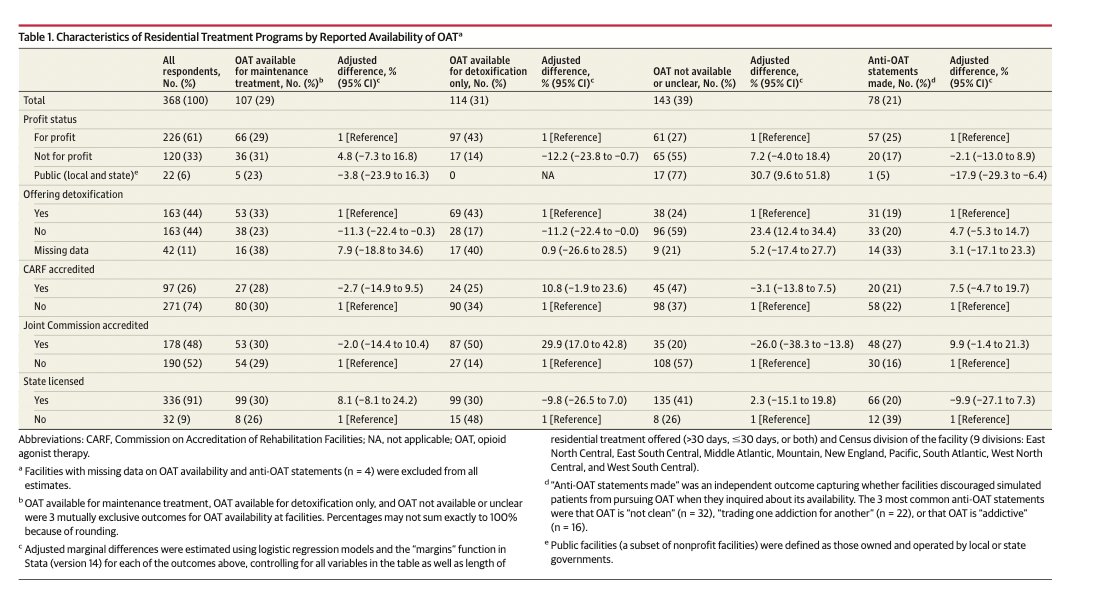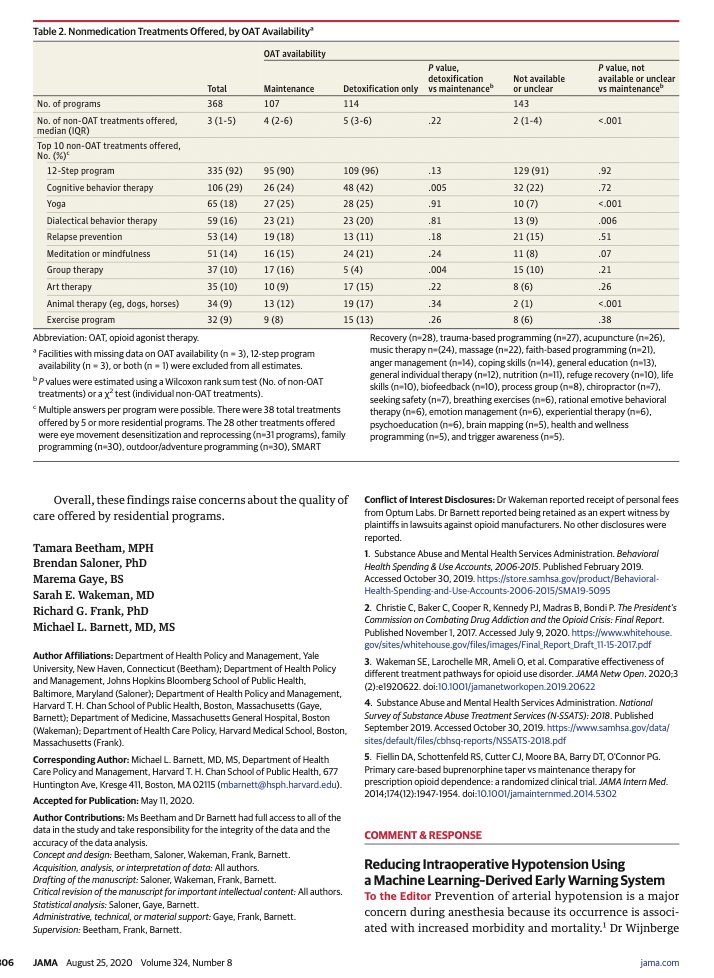
You have probably seen the record-breaking, terrible COVID-19 stats for Dec 2nd in the US
Daily cases: 195,695
Currently hospitalized: 100,226
Daily deaths: 2,733
You need to understand these numbers in context
It makes them even more frightening
covidtracking.com/data/charts/us…
🧵
Daily cases: 195,695
Currently hospitalized: 100,226
Daily deaths: 2,733
You need to understand these numbers in context
It makes them even more frightening
covidtracking.com/data/charts/us…
🧵
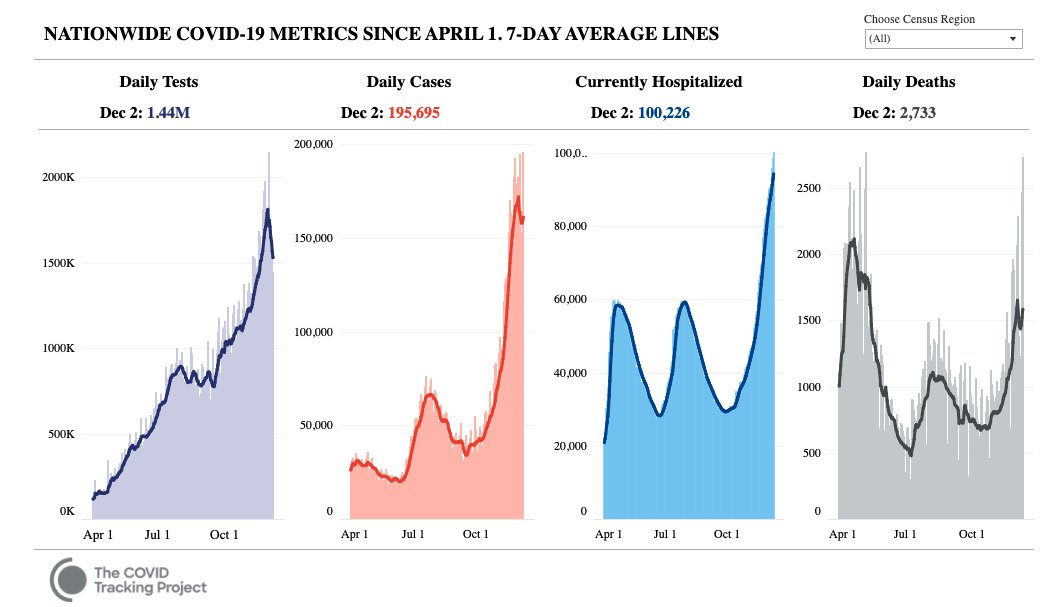
Let's start with hospitalizations: 100,226 total on 12/2/20.
On the average day in 2018, there were 612,000 hospitalized patients. Assume this is 620,000 in 2020 without Covid
So roughly **16%** or ONE in SIX hospitalized patients in the US has Covid.
guide.prod.iam.aha.org/stats/historic…
On the average day in 2018, there were 612,000 hospitalized patients. Assume this is 620,000 in 2020 without Covid
So roughly **16%** or ONE in SIX hospitalized patients in the US has Covid.
guide.prod.iam.aha.org/stats/historic…
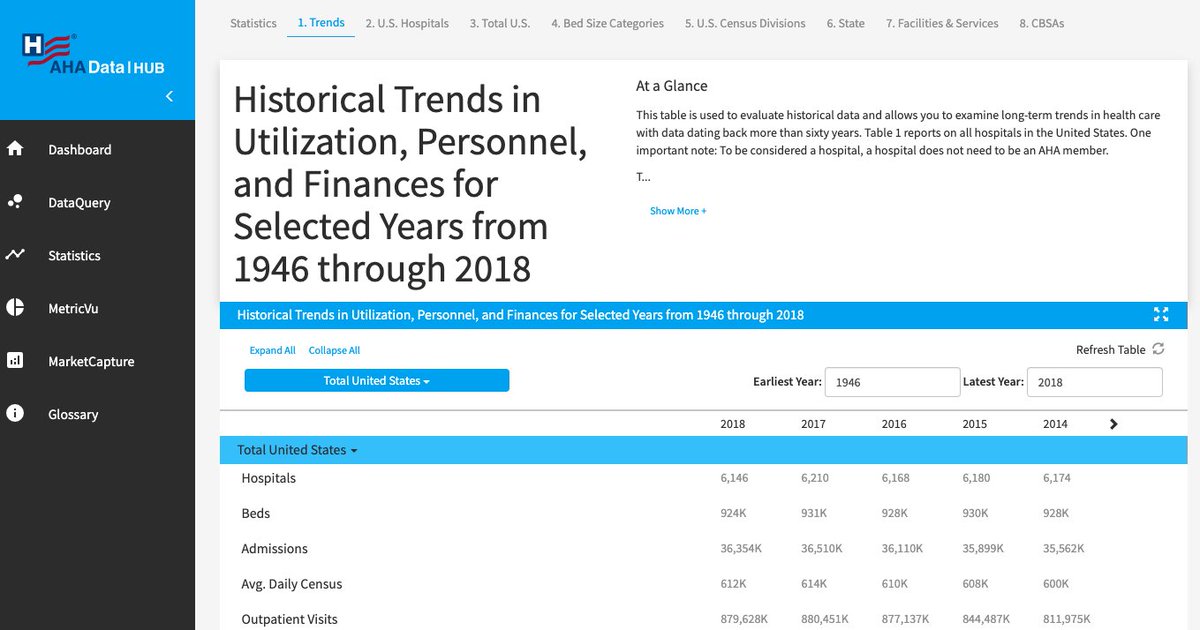
This is WAY higher than ANY OTHER reason for hospitalization, including childbirth.
Top 3 reasons for admission in US, 2017 (36.5 million annual admissions):
Childbirth - 10.1%
Sepsis (infection) - 5.7%
Arthritis (elective surgery mostly) - 3.4%
hcup-us.ahrq.gov/faststats/Nati…
Top 3 reasons for admission in US, 2017 (36.5 million annual admissions):
Childbirth - 10.1%
Sepsis (infection) - 5.7%
Arthritis (elective surgery mostly) - 3.4%
hcup-us.ahrq.gov/faststats/Nati…
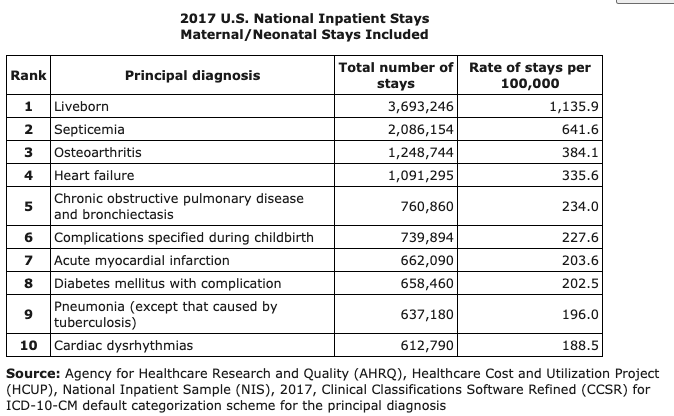
The estimate of 16% of hospitalizations for Covid-19 right now assumes that all elective surgeries are happening as planned and includes kids and childbirth.
So this is a big underestimate of what hospitals are seeing in standard adult inpatient units.
So this is a big underestimate of what hospitals are seeing in standard adult inpatient units.
Mortality next - 2,733 deaths on 12/2.
In 2018, there were ~7,800 daily deaths in the whole US on average. Let's assume that's 8,000 for 2020 without Covid.
That means that 34% of ALL DEATHS daily in the US right now are from Covid. Over ONE in THREE.
cdc.gov/nchs/fastats/d…
In 2018, there were ~7,800 daily deaths in the whole US on average. Let's assume that's 8,000 for 2020 without Covid.
That means that 34% of ALL DEATHS daily in the US right now are from Covid. Over ONE in THREE.
cdc.gov/nchs/fastats/d…
That far exceeds the daily death toll for any other cause of death
Top 3 causes of death:
Heart disease: 1,795 daily
Cancer: 1,642 daily
Accidents: 437 daily
Covid-19 won't be the #1 cause of death in the US in 2020 but based on 2018 stats it will be #3
cdc.gov/nchs/fastats/d…
Top 3 causes of death:
Heart disease: 1,795 daily
Cancer: 1,642 daily
Accidents: 437 daily
Covid-19 won't be the #1 cause of death in the US in 2020 but based on 2018 stats it will be #3
cdc.gov/nchs/fastats/d…
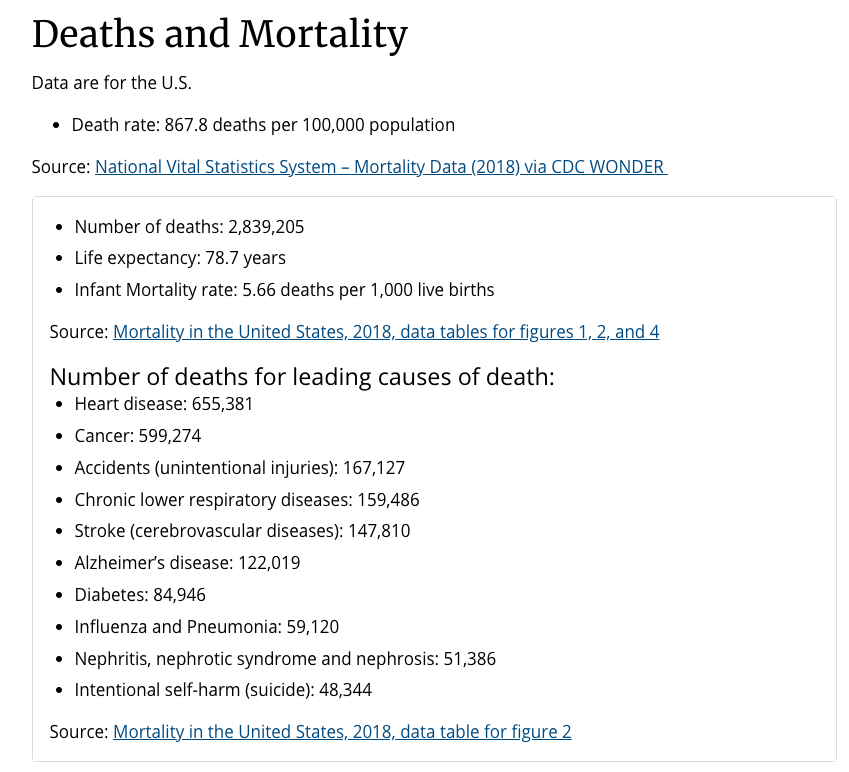
Here's the most frightening part. We are in the eye of the storm.
We won't see the biggest bump in hospitalizations or deaths from Thanksgiving travel for another 1-2 weeks
And then there's Xmas + new year travel
Don't get numb. Please be safer than you have ever been in 2020
We won't see the biggest bump in hospitalizations or deaths from Thanksgiving travel for another 1-2 weeks
And then there's Xmas + new year travel
Don't get numb. Please be safer than you have ever been in 2020
@walidgellad raised an important technical point which is that my estimates don't represent what the final numbers will be for Covid-19 % of hospitalizations or deaths.
That is true - BUT - my point here is just benchmarking how bad this is compared to typical stats.
That is true - BUT - my point here is just benchmarking how bad this is compared to typical stats.
• • •
Missing some Tweet in this thread? You can try to
force a refresh

